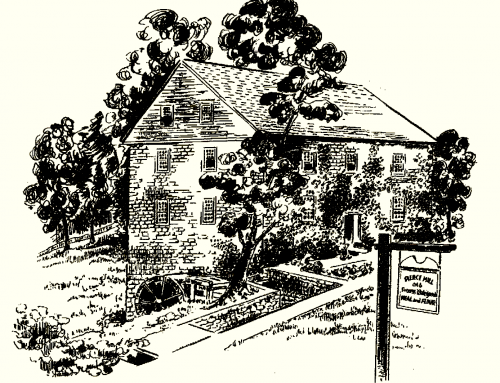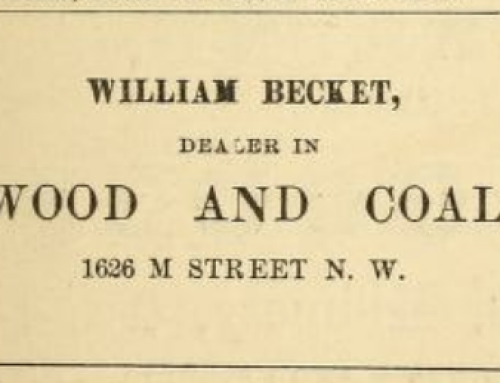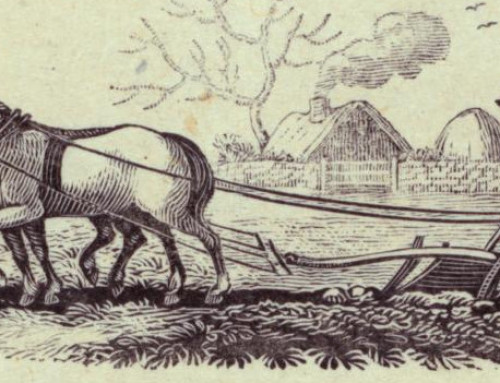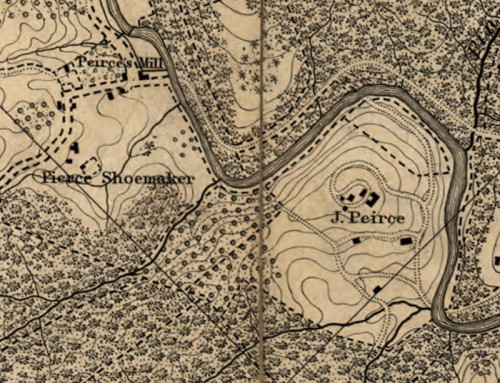Dam History: The Waterfall at Peirce Mill
The waterfall at Peirce Mill is one of Rock Creek Park’s most iconic features. But what is it?
First, it’s not a real waterfall, or at least not a natural one. The boulder dam near Peirce Mill was constructed at the turn of the twentieth century to “beautify” the creek and create a tranquil setting for park visitors.
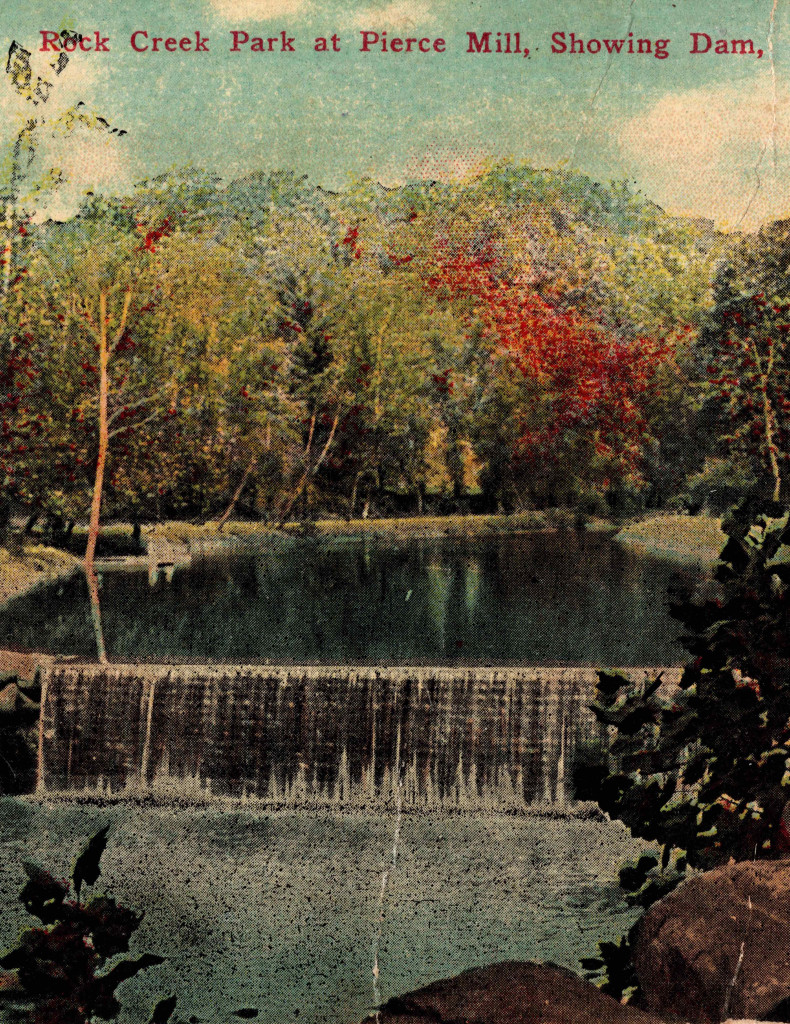
Historic postcard courtesy John DeFerrari
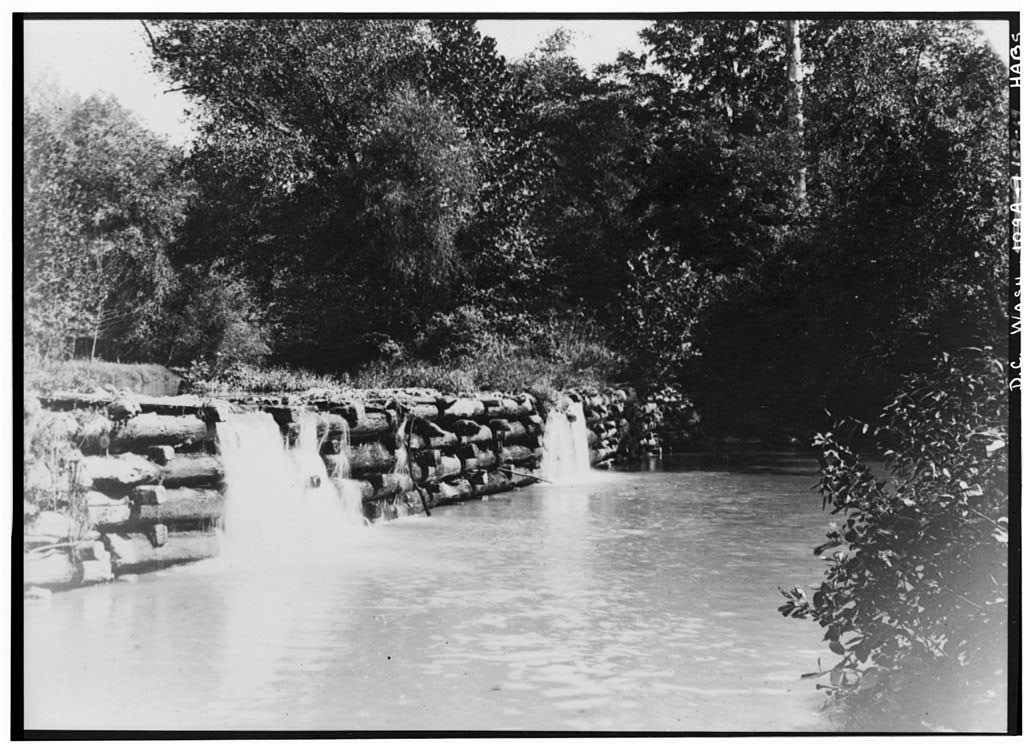
1899 photograph from the Historic American Buildings Survey
And no, it’s not part of an old millpond. Peirce Mill did have a millpond in the 19th century, but it was further upstream. The old millpond dam–shown in this 1899 photograph–was built from stacked logs, or cribwork.
This detail from Albert Boschke’s 1861 map of Washington shows the location of the old dam upstream from Peirce Mill. The millpond dam was rebuilt several times, but eventually washed out around 1900, leaving behind a “barren and rather ugly bed.”
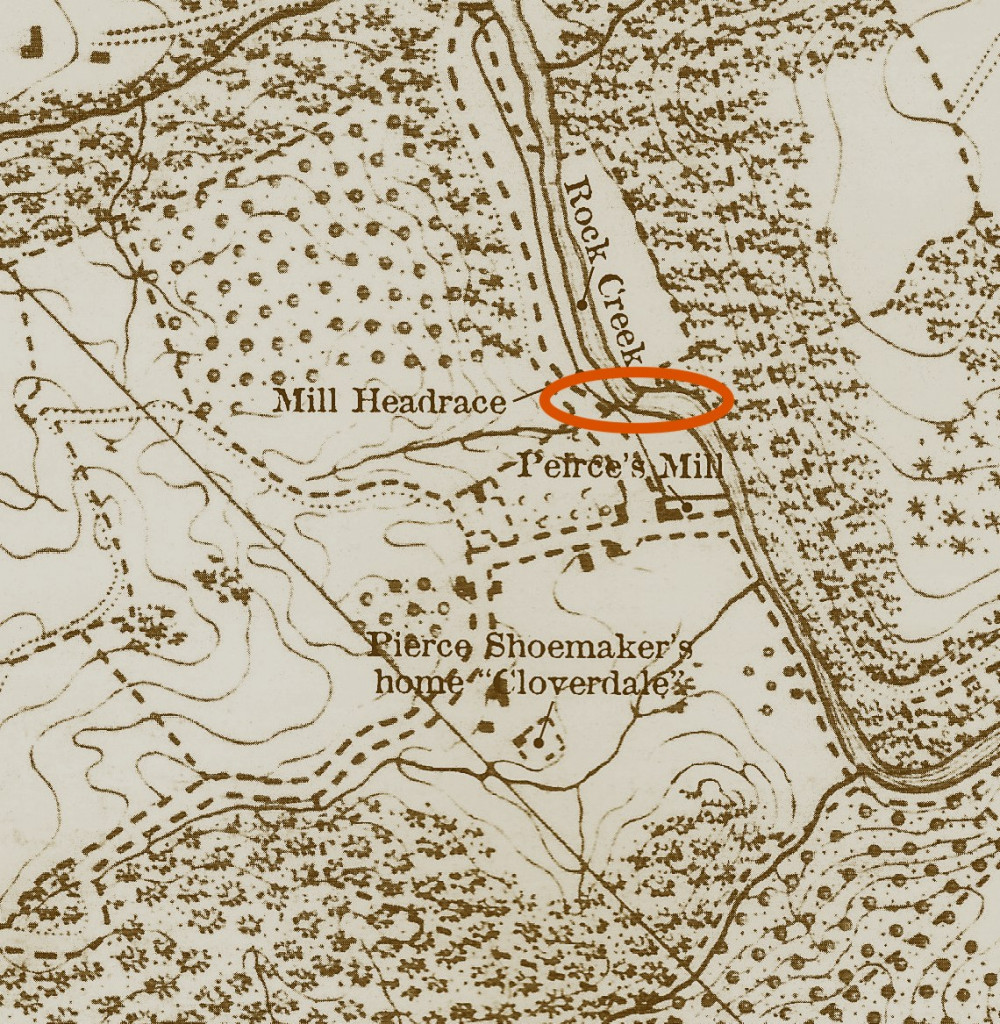
Detail of 1861 Boschke map showing the millpond dam
Even in the early years of Rock Creek Park, the area around Peirce Mill was popular with picnickers. The barren creek bed seemed like an unsavory backdrop for dining al fresco, so park managers decided to improve the scenery by constructing a new dam closer to the mill.
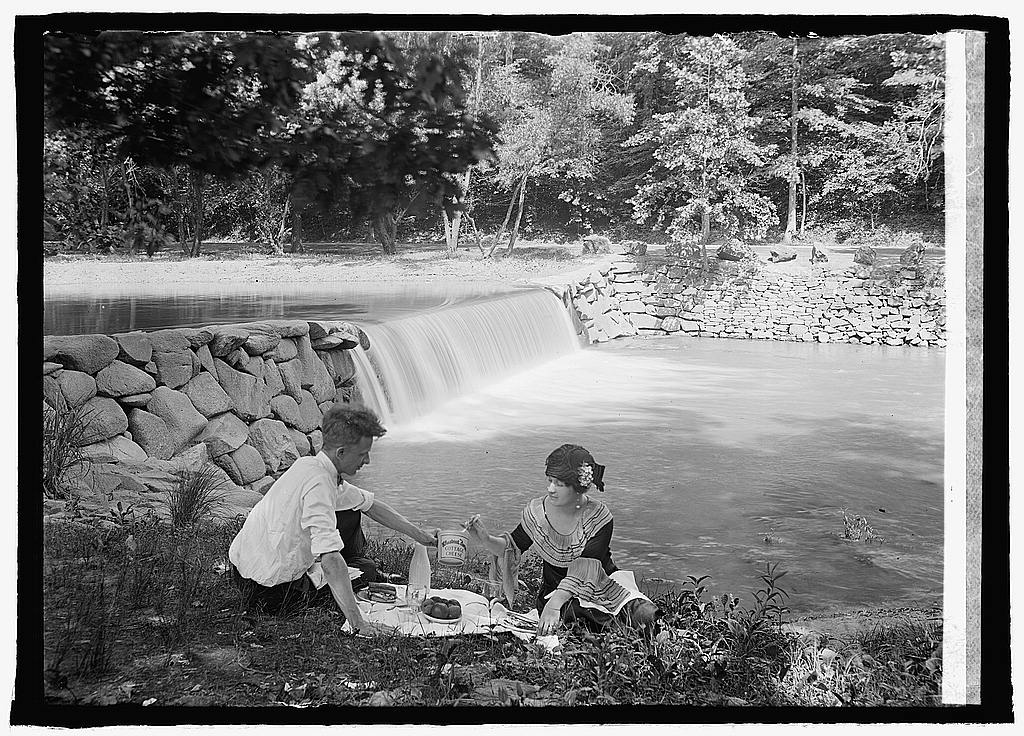
Picnicking near Peirce Mill c. 1920, Library of Congress
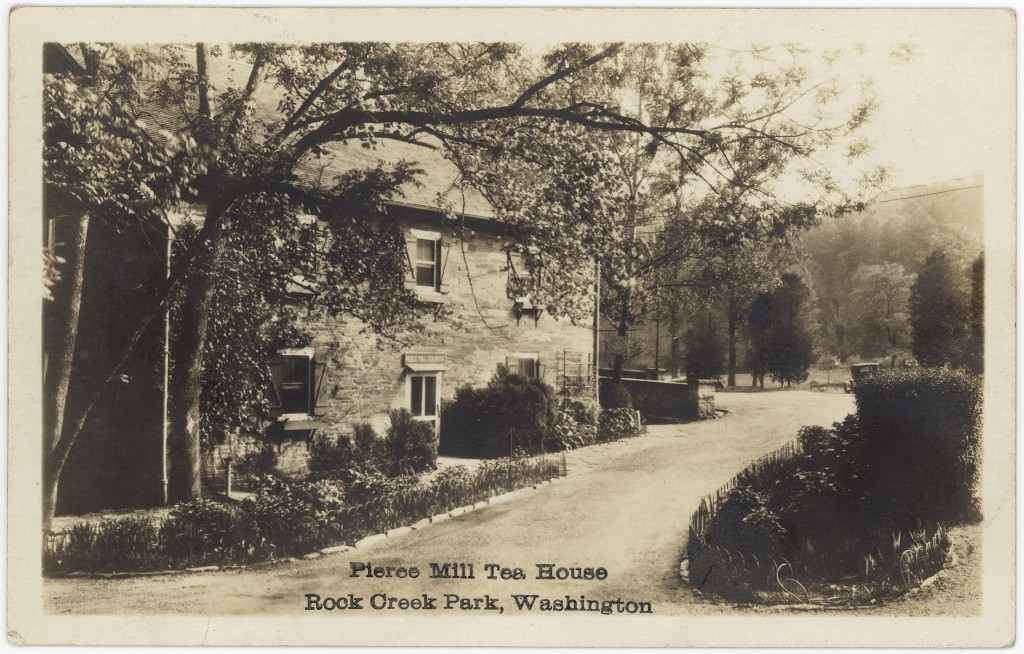
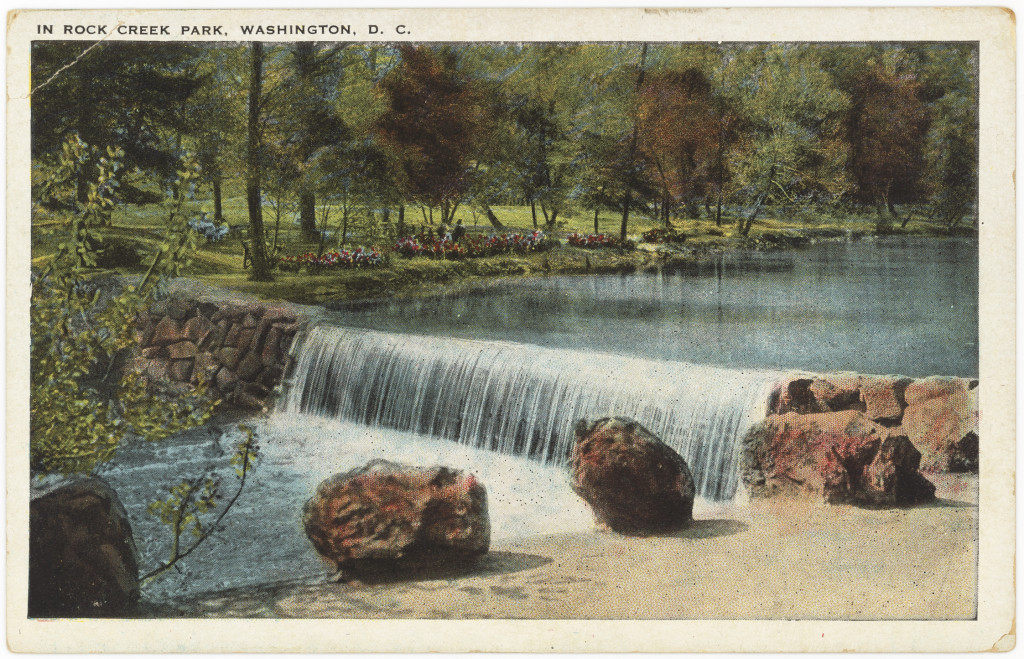
Historic postcards courtesy John DeFerrari
In 1904, a dam was built downstream from the old millpond, and closer to the mill itself. Large boulders were used, perhaps to blend into creek’s natural, rocky topography. The boulder dam also provided a rustic view for patrons of the new Peirce Mill Teahouse. Park managers converted the old gristmill into a teahouse around 1905, after the mill’s wooden machinery failed in the late 19th century.
The artificial waterfall and picturesque–but non-functional–gristmill became popular tourist attractions. Rock Creek Park visitors sent postcards like these to the folks back home.
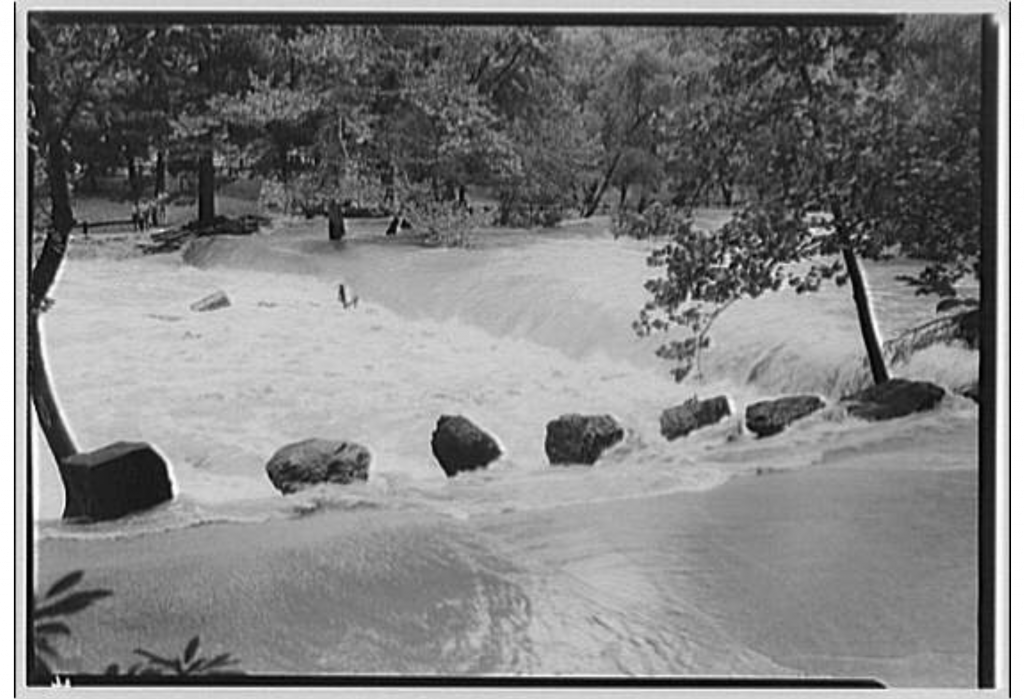
Rock Creek Flooding on August 23, 1933, Library of Congress
But the scenery around the waterfall wasn’t always tranquil. On August 23, 1933, the devastating Chesapeake-Potomac hurricane dropped more than 6 inches of rain on DC in one day, overwhelming Rock Creek’s banks and leaving the Peirce Mill dam almost unrecognizable.
Compare this photograph to the postcard above, which shows the same boulders lining the creek.
Shortly after the 1933 hurricane, Peirce Mill was restored as a Depression-era historic preservation project. The National Park Service considered removing the boulder dam and replacing it with a more historically accurate cribwork dam and millpond. This solution proved too expensive, but they decided to raise the dam, making the waterfall a bit taller. This photograph shows the Civilian Conservation Corps adding 8 inches to the dam in 1936.
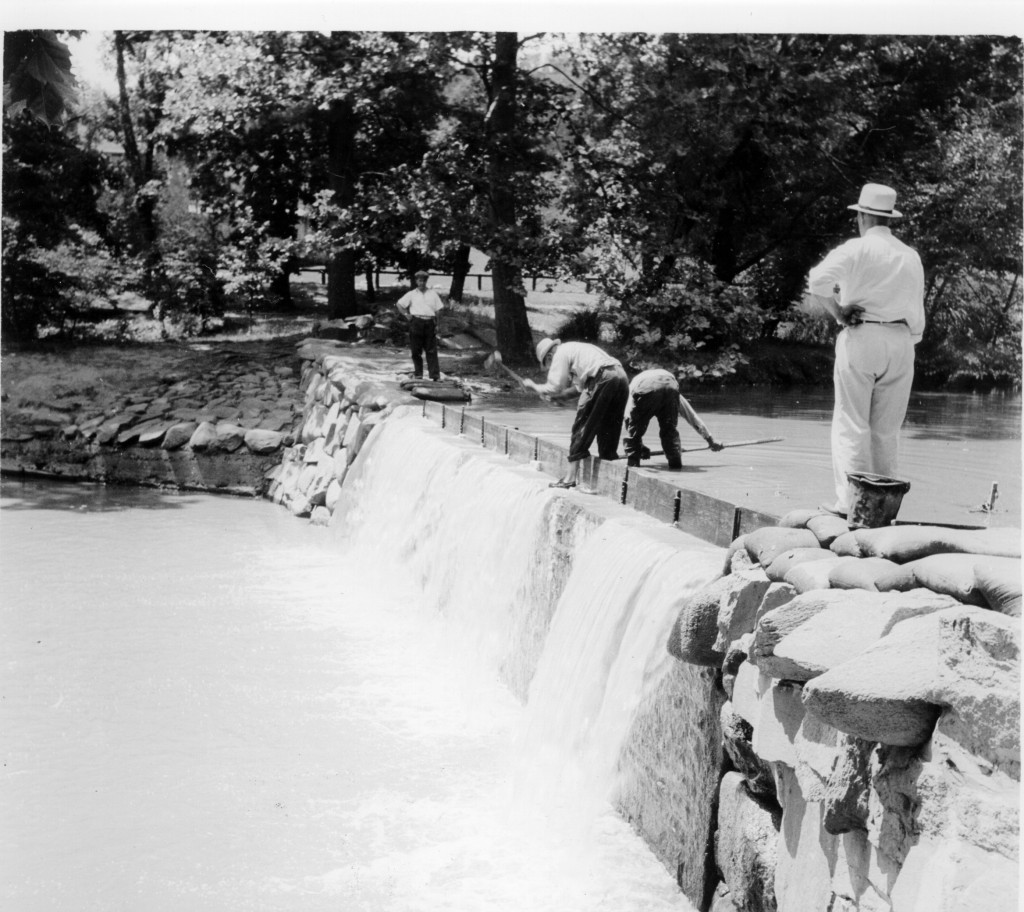
Raising the dam in 1936; Rock Creek Park Historic Photograph Collection
Even in unremarkable weather, the dam at Peirce Mill created an insurmountable challenge for migrating fish. Blueback herring and alewives have traveled up Rock Creek to spawn since long before the waterfall–or mill–were built.
Each spring, these fish swim from the Chesapeake Bay, up the Potomac River, and into Rock Creek. But their spawning grounds lie beyond Peirce Mill, and the dam is too steep for even the mighty herring to navigate.
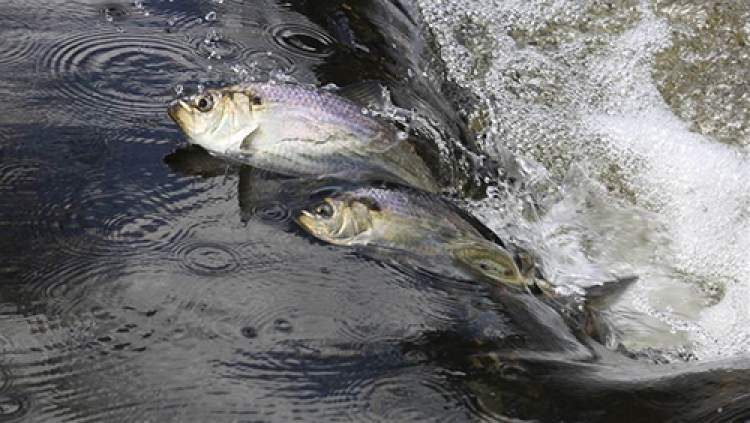
Photograph courtesy Reggie Kelley
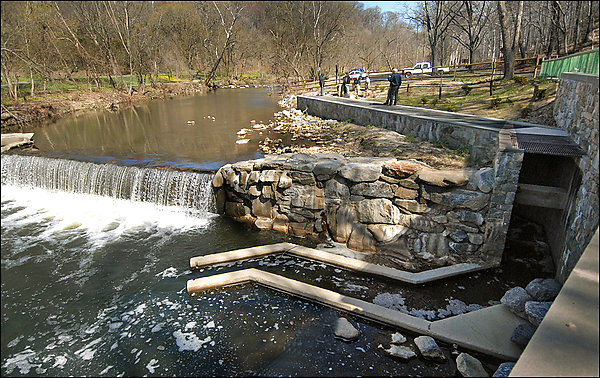
2007 photograph by Gerald Martineau, courtesy American Rivers
In 2006, a fish ladder was installed to provide a detour around the waterfall, and to enable the herring to reach their spawning grounds upstream. The ladder is a concrete channel that runs along the east side of the dam. Inside the channel, the fish ascend through a series of steps–like the rungs of a ladder.
The fish usually pass by Peirce Mill in mid-April–but their schedule depends on weather and water levels. On sunny afternoons, look for their silvery bodies in the rocky, shallow water below the dam.

